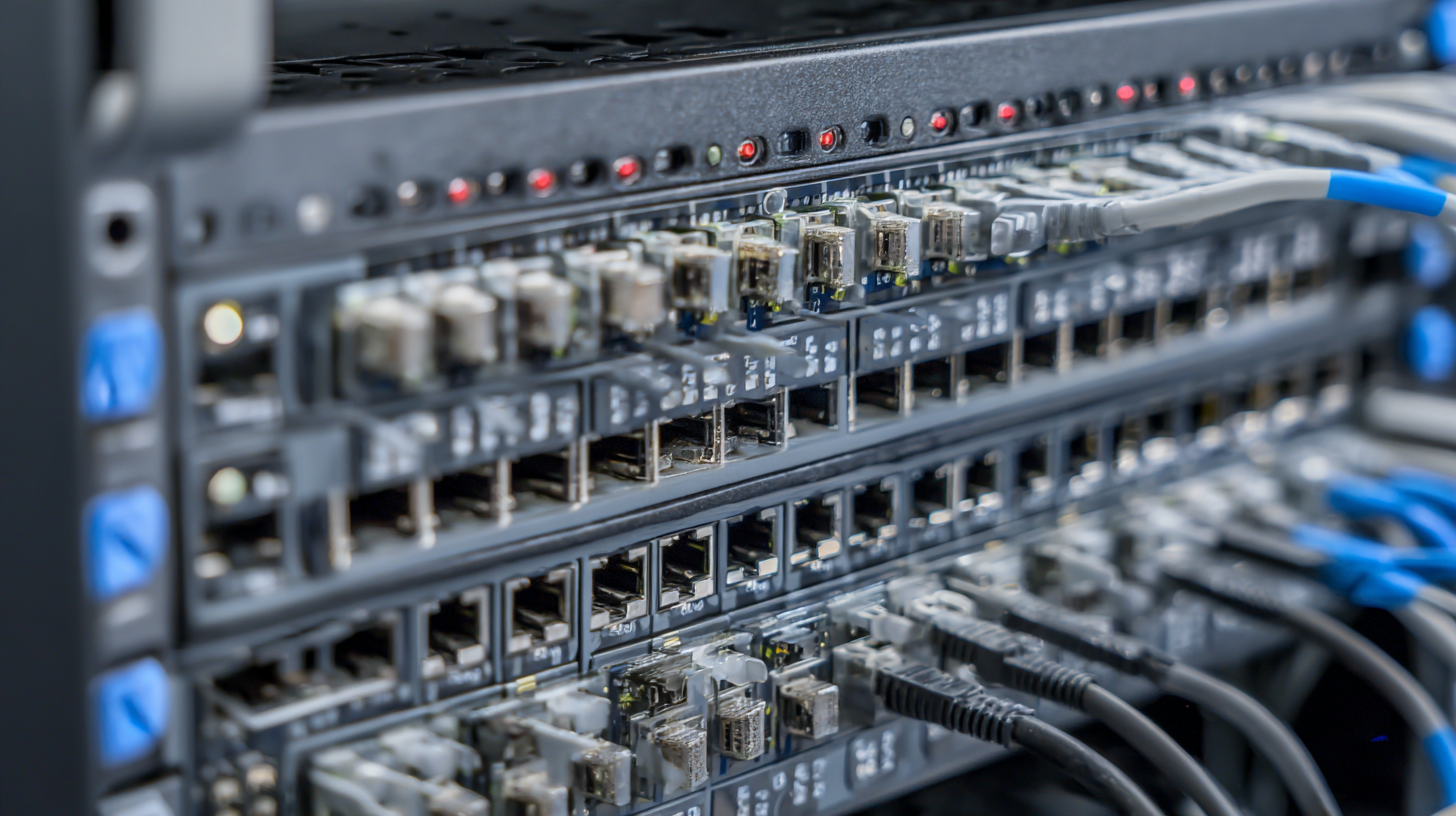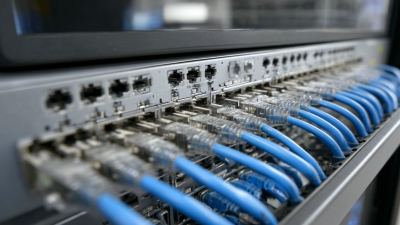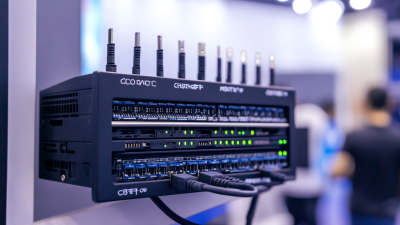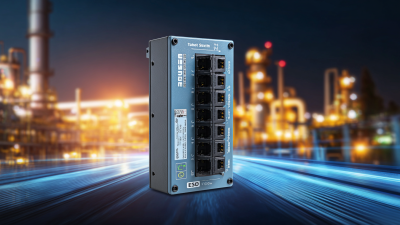
- hasivo@hasivo.com
- Mon - Sat at 7:00AM to 9:00PM
Leave Your Message

As businesses continue to evolve in an increasingly digital world, the importance of selecting the right Network Switch has never been more critical. With recent reports indicating that the global network switch market is expected to reach USD 38 billion by 2026, reflecting a compound annual growth rate (CAGR) of approximately 5.2%, it is evident that organizations are prioritizing the optimization of their network infrastructure. In an age where data is the lifeblood of operations, having a reliable and efficient Network Switch not only enhances connectivity but also ensures seamless communication between devices, ultimately driving business success.
Choosing the best Network Switch tailored to specific needs can be daunting, given the myriad of options available in the market. Factors such as speed, capacity, and network topology play pivotal roles in this decision-making process. According to a study by MarketsandMarkets, the demand for managed switches is projected to grow significantly, as businesses seek more control over their network environments. This guide aims to simplify that journey, providing comprehensive insights into various types of digital network switches, their features, and specific use cases, empowering readers to make informed decisions that align with their technological and operational goals.

Understanding the different types of network switches is crucial for any organization that relies on network infrastructure. Primarily, network switches can be divided into three categories: unmanaged, managed, and smart switches. According to a report by Transparency Market Research, the global network switch market is expected to grow at a CAGR of over 5% from 2021 to 2028, largely driven by the increasing demand for high-speed network solutions.
 Unmanaged switches are typically plug-and-play devices ideal for smaller networks, while managed switches offer more control and configuration options, making them suitable for larger enterprises.
Unmanaged switches are typically plug-and-play devices ideal for smaller networks, while managed switches offer more control and configuration options, making them suitable for larger enterprises.
Managed switches allow for greater flexibility through features such as VLAN support, traffic prioritization, and network monitoring. A report from ResearchAndMarkets estimates that managed switches accounted for over 60% of the market share in 2020, highlighting their importance in modern network environments. Smart switches, on the other hand, provide a middle ground by offering limited management features, which can be beneficial for small to medium-sized businesses looking to improve efficiency without overspending. Understanding the basics and functionalities of these switches helps organizations make informed decisions tailored to their specific networking needs.
When it comes to selecting network switches for your infrastructure, understanding the difference between managed and unmanaged switches is crucial. Managed switches offer greater control and flexibility, allowing you to configure, monitor, and manage your network resources effectively. This level of oversight is particularly beneficial for larger networks with dynamic traffic demands. On the other hand, unmanaged switches are simpler solutions that provide basic connectivity without the need for configuration, making them ideal for smaller networks or specific applications where control is less critical.
Tip: If you're considering a managed switch, look for features such as VLAN support, Quality of Service (QoS), and port mirroring. These capabilities not only enhance performance but also improve security and traffic management.
For smaller businesses or home networks where budget and complexity are concerns, unmanaged switches can be a cost-effective choice. They are typically plug-and-play devices that require no setup, making them perfect for users who need a straightforward solution without the extra bells and whistles.
Tip: When selecting an unmanaged switch, ensure it has enough ports to accommodate your current devices and a little room for future expansion, as needs may grow over time.
Layer 2 and Layer 3 switches are essential components of modern networking, catering to different needs based on functionality and application. Layer 2 switches operate at the Data Link layer (Layer 2) of the OSI model, managing data traffic within a local network by using MAC addresses to forward data frames. According to a recent report by Grand View Research, the global Layer 2 and Layer 3 switch market is expected to reach $38.24 billion by 2027, emphasizing the growing reliance on efficient internal network management.
On the other hand, Layer 3 switches add an additional capability: routing. Operating at the Network layer (Layer 3), these switches not only forward data based on MAC addresses but also make routing decisions using IP addresses. They are crucial for inter-VLAN routing and can significantly reduce latency in large enterprise networks. A survey conducted by IDC indicated that 68% of organizations now acknowledge the importance of integrating Layer 3 switches to enhance their network scalability and performance. Understanding these distinctions helps businesses select the right type of switch according to their network complexity and future growth aspirations.
Power over Ethernet (PoE) switches have revolutionized the way networks are structured, providing both power and data over a single cable. This simplifies the setup of devices like IP cameras, Wi-Fi access points, and VoIP phones, reducing the need for additional power cables and outlets. The main benefit of a PoE switch is its ability to deliver seamless power and connectivity, allowing for more flexible device placement and better organization in various environments.

When selecting a PoE switch for your network, consider factors such as power budget, number of ports, and the specific PoE standard your devices require. Tip: Evaluate the total power consumption of all devices connected to the switch to ensure you choose a model that can handle your network's needs. Additionally, look for switches with management capabilities, as they allow for better control over power distribution and can help in troubleshooting issues efficiently.
Another important aspect is the switch's compatibility with future technologies. As your network grows, you might want to incorporate new devices that require higher power levels. Tip: Opt for switches that support the latest PoE standards, such as PoE+ or PoE++, which can provide up to 60W and 100W per port, respectively. This guarantees longevity and scalability in your network infrastructure, allowing you to adapt to evolving demands without the need for constant upgrades.
When it comes to selecting the right network switches in 2025, understanding port density and speed is crucial for optimizing your network’s performance. Port density refers to the number of connections a switch can support, while speed determines how quickly data can be transmitted across those connections. Research shows that organizations are increasingly opting for higher port density options to accommodate the growing number of connected devices; Gartner predicts that by 2025, the average enterprise will have over 30,000 devices connected to their networks.
To enhance your selection process, consider the specific requirements of your network. For instance, if your business relies on a significant amount of data transfer, investing in switches with at least 10Gbps speeds can greatly improve efficiency. Conversely, for smaller setups, a 1Gbps switch may suffice. A balance between speed and density is essential; a switch with high speed but low port density may not meet future expansion needs.
**Tips**: When evaluating switches, always factor in potential growth—future-proofing your infrastructure can save costs in the long run. Moreover, look for models that offer flexibility, such as modular designs, which allow for easy upgrades of port speeds and additional connections as your network evolves.
This chart compares the port density and speed of various network switches available in 2025. 'Port Density' indicates the number of available ports on each switch, while 'Speed' denotes the maximum throughput in Gbps. This information is crucial for effectively choosing the right network switch based on your specific needs.





